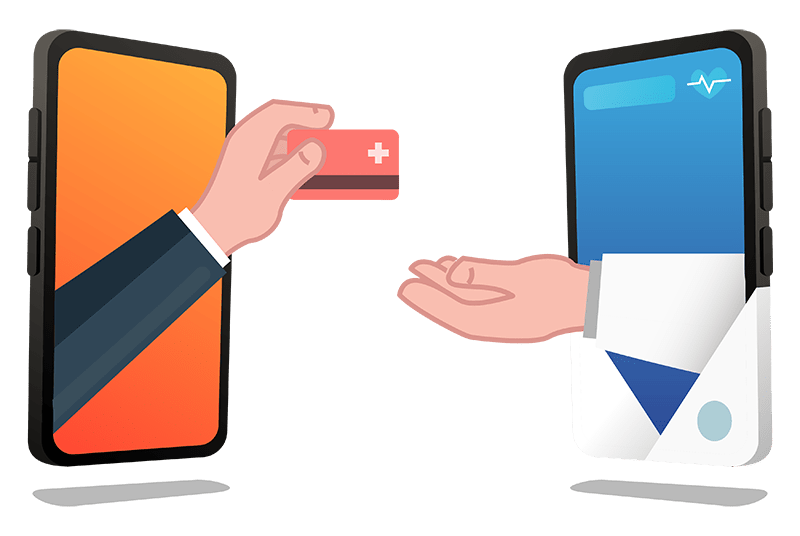Spider Vein and Varicose Vein Doctor Near Me: Dr. Nguyen Offers a Laser Treatment for Spider Veins
Did you know that most vein treatments are covered by by most insurances, including Medicare?
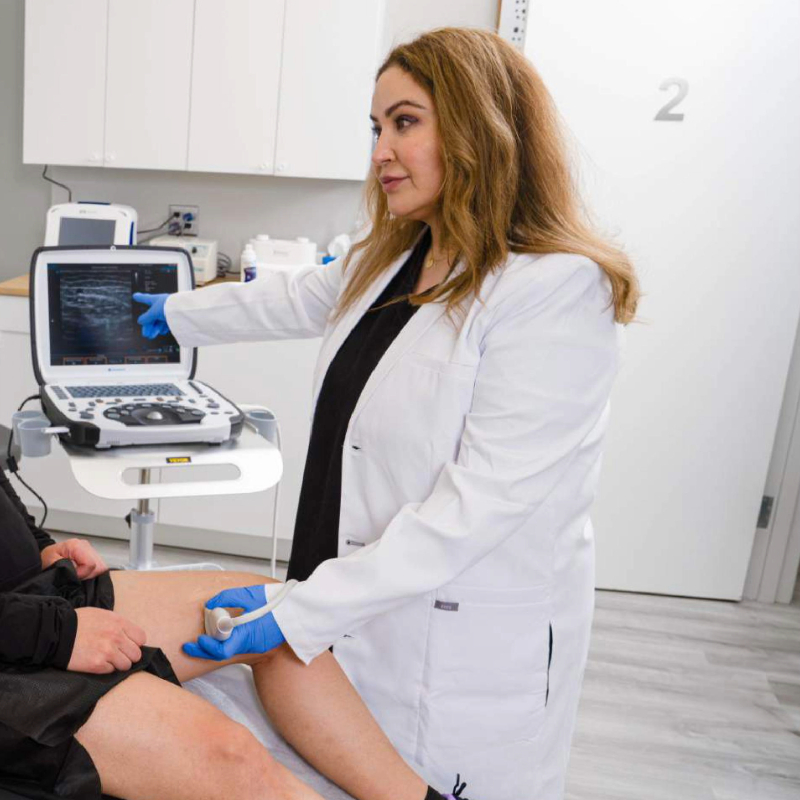
What is the major cause of varicose veins and how can a vein doctor near me help? How can I find a good Vein Clinic?
But first, a bit more about vein disease: Veins are blood vessels that carry blood back to the heart. All of the veins in the leg have valves, one-way doors within the veins that prevent blood from flowing back towards the feet. In many people these valves become damaged over time. When the valves are damaged and leaky, blood travels back down to the feet. The extra blood causes increasingly high pressure within the veins, a condition called venous hypertension. The combination of leaky valves leading to venous hypertension is called chronic venous insufficiency. With chronic venous insufficiency, also known as venous reflux or just venous disease, swelling in the leg veins leads to the formation of new, unhealthy varicose veins and spider veins. These visible veins are signals of an underlying problem – chronic venous insufficiency.
The best way to find out if you have vein disease is to look for an expert vein doctor and see them in person. By looking for a “vein doctor near me,” you can find a number of qualified physicians. Once you see the doctor of your choice in person, he/she can diagnose chronic venous insufficiency. Usually an ultrasound of the legs can help look at your valves and see if they are leaky and you have vein disease. A good vein doctor can look at your veins and explain everything clearly.
If you have venous reflux or vein disease, a vein expert can help you choose the best minimally invasive treatment – laser, radiofrequency ablation or sclerotherapy. If you notice that your legs are swollen, painful, stained or have bulging varicose veins, you probably have chronic venous hypertension and should find a good vein doctor.
Who gets spider veins and where do they form?
According to published studies, about sixty percent of adults will develop spider veins or larger varicose veins at a given point in their lifetime. Although spider veins can form on any body part (face, hands and forearms) that is exposed to the sunlight, it’s usually the legs (lower leg and thigh) that are affected the most. When spider veins form, there can be burning, tingling and a feeling of restlessness in legs.
A feeling of heaviness is common, as well as swelling and darkening of the skin. Women who have this problem tend to feel more discomfort when during menstruation or when pregnant. Ladies who use birth control pills or those who have gained weight are more likely to have vein disease and require treatment including laser treatment.
What are the symptoms of Vein Disease? Is there a vein doctor near me?
What are the symptoms of Vein Disease? Is there a vein doctor near me?
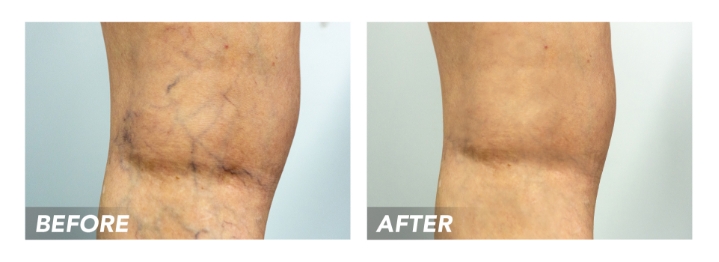
Results of spider vein treatment. Results may vary.
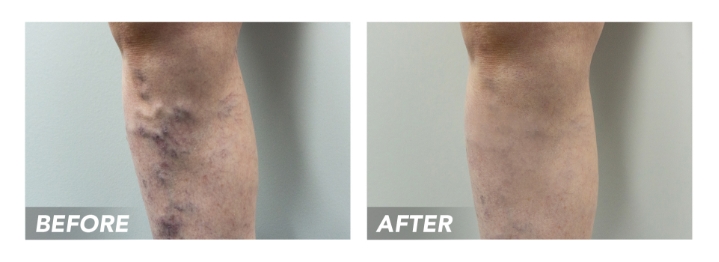
Results of varicose vein treatment. Results may vary.
Vein Disease Symptoms
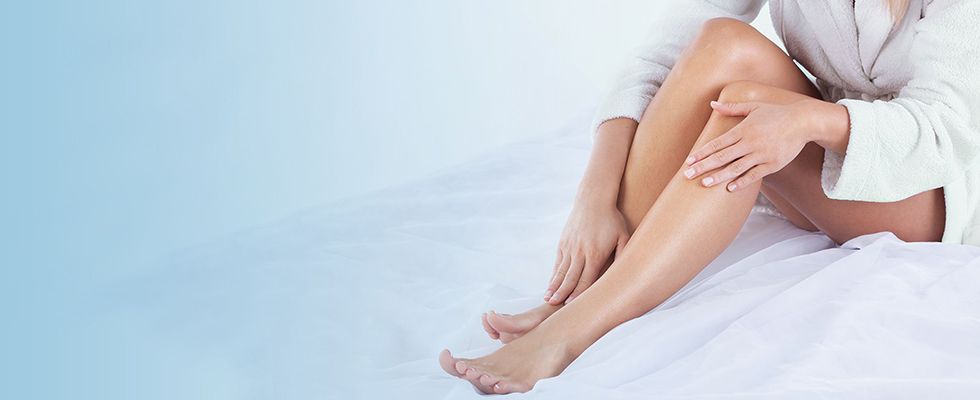
What are the symptoms of Vein Disease? Is there a Vein Doctor Near me?
- Skin rash
- Veins that can be red, purple or blue
- Bulging veins
- Bleeding from veins
- Cramping or throbbing pain
- Restless Legs
- Heaviness in the legs, especially at the end of the day
- Itching
- Skin discoloration and ulcers
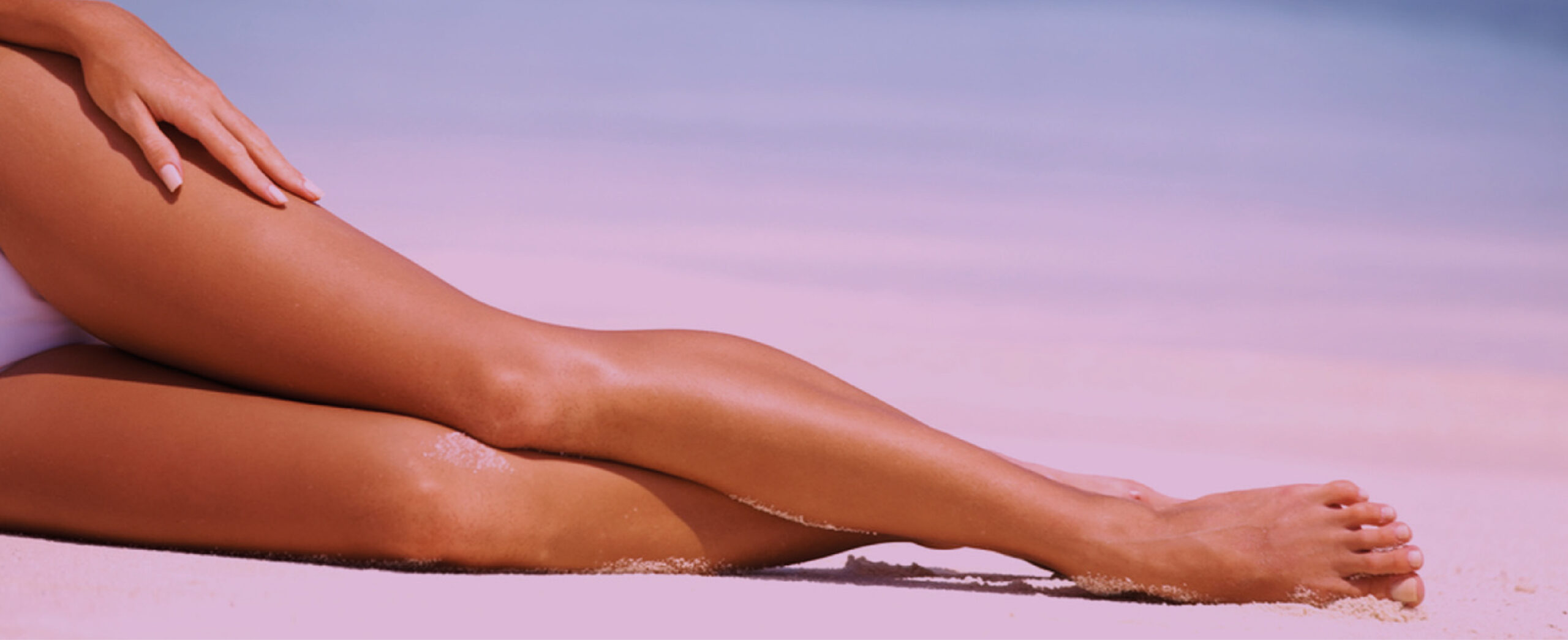
What is the difference between spider veins and varicose veins? Should I seek vein treatment near me?
Spider veins look like small branching trees, varicose veins are like twisted, swollen blue cords raised above the skin.
Both spider veins and varicose veins can cause symptoms such as itching, burning, heaviness, fatigue, swelling and venous ulcers. If spider veins and varicose veins go untreated, you may risk serious complications and health issues.

How do vein experts diagnose varicose vein disease?
If you have noticed leg heaviness at the end of the day, particularly if you have visible spider and varicose veins on the surface of the skin, consider seeing a qualified vein doctor to be evaluated for venous insufficiency.

What is the best treatment for varicose veins?
- Sclerotherapy: Sclerotherapy involves the administration of a chemical called sclerosant into the vein. A spider vein expert near you will use a small needle to enter the vein, then use an ultrasound to make sure the needle is in exactly the right place. After your vein doctor injects the sclerosant, the vein walls will collapse and the vein will shrink and finally disappear. The vein is eventually reabsorbed by the body and blood is re-routed to healthy veins. 90% of patients get excellent results and side effects are minimal. After treatment you should wear compression stockings for at least three days. A vein disease doctor will make sure you know exactly what to expect. Search for a vein doctor near me to find a local vein expert.
- Laser Therapy: Laser therapy, also known as endovenous laser ablation, is another excellent treatment for varicose veins. A vein doctor carefully enters the vein using ultrasound-guidance and places a laser device inside. The laser device delivers energy to the walls of the vein closing the vein. Endovenous ablation has an excellent success rate of 94-98%. Endovenous ablation is quick and easy when it is performed by a vein expert. It usually takes only 15-30 minutes and can be performed in a doctor’s office under local anesthesia only. Most people are able to return to work the same day. If you want to vein treatment near me, search for an expert vein doctor today.
- Radiofrequency Ablation: Similar to endovenous laser therapy, radiofrequency involves inserting a small device into a vein using ultrasound-guidance. Instead of laser energy, heat energy is used to seal and close the vein. Radiofrequency ablation is also only a 15-30 minute procedure with minimal side effects including mild bruising only. You can walk normally right away.
Are you the right candidate for vein treatment?
Perhaps after reading this article you are wondering if you should search for a spider vein doctor near me online. If you have symptoms of vein disease such as visible varicose veins or spider veins, heaviness pain or swelling, or if you have a family history of spider veins, consider finding a local vein expert so they can check for chronic venous insufficiency.
Conclusion
Some people assume that having spider veins is normal and can be left untreated. However spider veins and varicose veins can cause significant symptoms including pain, heaviness and burning or itching. In addition, spider veins and varicose veins can progress and lead to ulceration or bleeding. Many people are self-conscious due to the appearance of their legs. Search for a vein expert near you and find out if you have chronic venous insufficiency. If you do, your doctor can help you choose the best treatment which may include options such as sclerotherapy, radiofrequency ablation or laser. If you have significant symptoms, your insurance should cover vein treatment.
Treat your varicose veins Today!
We know health insurance is confusing so we will help you check if you're covered:
Coverage Checker:
Next Steps
Complimentary Verification
Meet Your Vein Specialist
Receive a Treatment Plan
Start Feeling Better
YOUR VISIT
Watch our brief video on what you can expect during your appointment at the Vein Treatment Clinic!
Questions About Insurance?
Questions about insurance coverage? We will help explain to you your vein treatment insurance coverage and benefits. Provide us with your insurance information and we will answer any questions you may have (844) 690-1788
Before any treatment is done, you will have a detailed outline of how much you will owe (if anything). We will work directly with your insurance company to help you get treated.
We work closely with insurance companies and you to ensure that there are no surprise bills or hidden costs.
